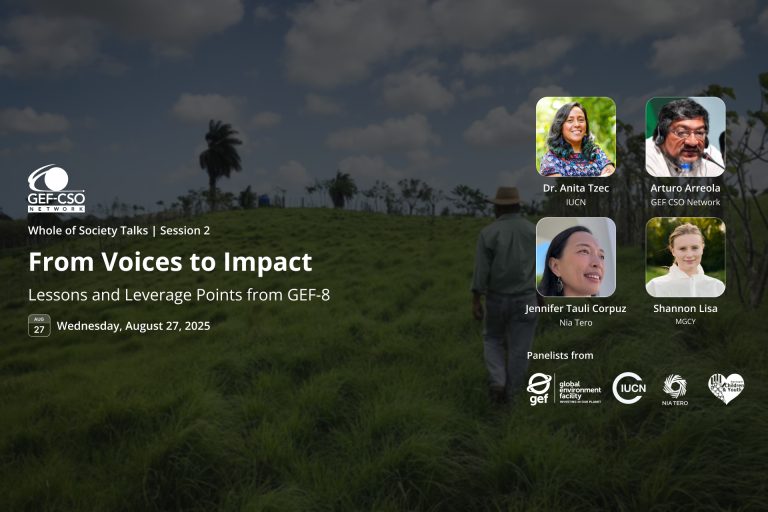Since its inception in 1991, the Global Environment Facility (GEF) has played a crucial role in addressing the world’s most pressing environmental issues. However, when the GEF first launched, only 2% of its grants were allocated to forest conservation.
Today, the GEF’s commitment to sustainable forest management has grown significantly, as more and more countries recognize the critical role that forests play in maintaining healthy ecosystems, mitigating climate change, and supporting human health.
According to Carlos Manuel Rodriguez, GEF CEO and Chairperson, protecting primary forests is a key priority in addressing the twin crises of biodiversity loss and climate change. “The science is clear,” he said. “Protecting primary forests is the cheapest and best solution.”
To date, the GEF has invested $3.7 billion in forest conservation and management initiatives around the world, from the Amazon to the Congo Basin to Asia and the Pacific. These investments have supported a wide range of activities, including the establishment of new protected areas, the promotion of sustainable land-use practices, and the development of alternative livelihoods for local communities.
Through its ongoing work, the GEF is helping to protect and restore the world’s forests, ensuring that they continue to provide critical benefits to people and the planet for generations to come.
From 2018 to 2022, forest conservation projects received 27% of funding distributed by the Global Environment Facility (GEF). And in the upcoming GEF-8 funding cycle, forests are set to receive even more support, with an estimated $1.5 billion allocated to projects with an impact on the sector.
Forests are a critical component of many environmental priorities, including biodiversity protection, climate change mitigation, and the management of river basins and watersheds. That’s why the GEF has approved an ambitious proposal for the Amazon, Congo, and Critical Forest Biomes Integrated Program, which aims to safeguard the world’s remaining primary forests.
These forests are essential in the fight against climate change and biodiversity loss, and provide vital resources like food, income, and medicine to millions of people who live in and near them. The program is also open to other areas with high ecological integrity, including tropical forests in Mesoamerica, West Africa, Asia, and the Pacific, which provide irreplaceable services that cannot be replicated on a human timescale.
Increasing Challenges, Growing Determination
Over the past few decades, the determination to save the world’s forests from destruction has grown stronger, and for good reason.
Forests are home to the majority of the world’s biodiversity and serve as critical carbon sinks, combating soil erosion, and purifying the water we drink and the air we breathe. They also provide food, medicine, fuel, and shelter, and recent studies suggest that their preservation could help prevent future pandemics.
However, these vital ecosystems face increasing and severe threats from climate change-linked disasters, shifting weather patterns, contamination by pollutants such as mercury, and most importantly, the intentional clearing of land for agriculture, mining, human settlements, and livestock.
Since the early 1990s, approximately 420 million hectares of forest have been lost to deforestation, largely due to the insatiable global demand for agricultural commodities like beef, soybeans, and palm oil. While the pace of deforestation has slowed, a Global Forest Watch report states that 11.1 million hectares of tropical tree cover were lost in 2021 alone, including 3.75 million hectares of primary forest cover.
To reverse this trend and ensure a sustainable future for the world’s remaining forests, the GEF and its vast network of partners are working to support the improved management and protection of critical biomes while also providing incentives for sustainable forest management.
The Critical Forest Biomes Integrated Program aims to safeguard entire biomes’ integrity by promoting various measures, including stronger cross-border investments and coordination, improved management and funding of protected areas, rational land use planning, clear land tenure and policies, coherent management of commercial and subsistence agricultural lands, and financing mechanisms and incentives for sustainable forest management.
Moreover, there is an urgent need to transform domestic institutions in countries that have previously neglected this area in a comprehensive manner. Achieving this requires breaking down silos and encouraging agencies to collaborate, set priorities, and establish coherent spending plans.
Through such efforts, environmental authorities can secure buy-in for conservation from a range of stakeholders working in and around forests, spanning the agriculture, mining, energy, transportation, and other sectors.
An Evolving Strategy for Forest Conservation
The Critical Forest Biomes Integrated Program signifies a shift in the GEF’s approach to forest conservation, which has been shaped by stakeholder feedback and on-the-ground experience.
While the GEF has historically focused on international environmental conventions such as the Convention on Biological Diversity and the UN Framework Convention on Climate Change, the growing sustainable forest management portfolio now reflects changing national and international priorities, as well as evidence-based shifts in forest management practices.
The GEF’s initial project-by-project approach to forest conservation has evolved into an integrated strategy that encompasses multiple focal areas, partner agencies, and Indigenous and local communities that rely on forests for their livelihoods. Rather than solely relying on protected areas to safeguard forests, the GEF’s landscape approach addresses the various sources of pressure that threaten critical ecosystems.
According to Jean-Marc Sinnassamy, who manages the GEF’s sustainable forest management portfolio for Africa and the Indo-Malay Pacific region, conservation efforts must involve collaboration with private sector entities, banks, and other global players to effect real change, as the decisions that impact primary forests are often made far from the biomes. Moreover, effective sustainable forest management initiatives require a thorough understanding of local and national contexts, and close engagement with Indigenous Peoples.
Sinnassamy emphasizes the need to find alternative sources of income for communities that depend on forests for their livelihoods, stating that “The countries that host these forests also need development, need jobs, need food security, need livelihoods, need money. The point is to find an alternative for these people, which could involve a mix of legal actions, soft agreements, and financing.”
In recent years, the GEF has supported pilot integrated approaches related to forests, which has led to countries showing increased openness and ownership of the landscape approach. This approach includes using buffer zones and corridors around protected areas to lessen the impact of activities beyond the borders of national parks and nature reserves.
According to Sinnassamy, this has led to the empowerment of local communities, including Indigenous Peoples, as well as multi-stakeholder approaches becoming the norm. In the upcoming Critical Forest Biomes Integrated Program, countries will have the opportunity to further benefit from the landscape approach through long-term financing for conservation, capacity building, payments for ecosystem services, and policy reforms. This represents a pivotal moment for scaling up investment in forests.
Featured image: Lingchor/Unsplash






